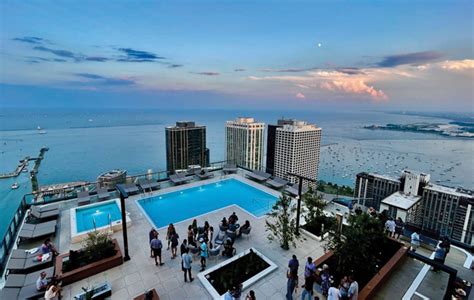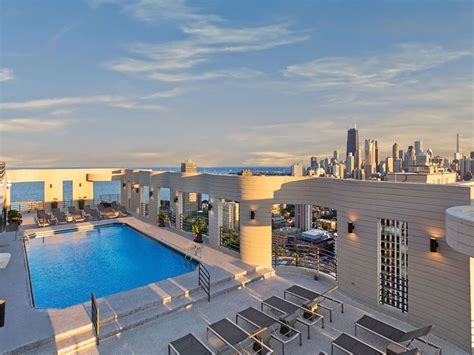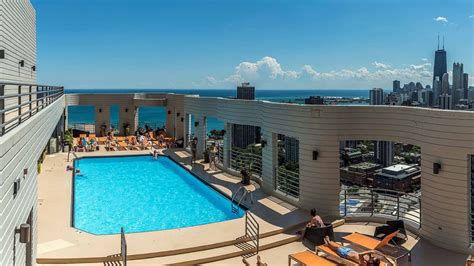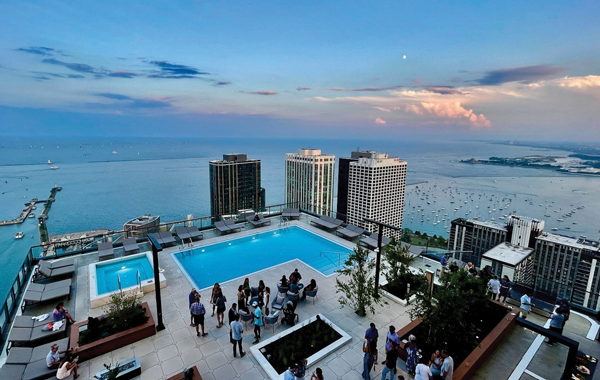Urban rooftops, often referred to as “urban tops,” have become iconic symbols of modern city life, blending architecture, culture, and innovation. These elevated spaces offer a unique perspective on urban landscapes, showcasing breathtaking skylines while serving as hubs for social, cultural, and environmental activities. From historic uses like water tanks and gardens to contemporary purposes such as rooftop bars, restaurants, and green spaces, urban tops have evolved into versatile environments. This article delves into the historical evolution of rooftop spaces, their architectural significance, and their cultural impact, while exploring some of the most popular and innovative rooftop spaces around the world. Join us as we explore the future of these high-rise oases.
Join ritarblog.com for a detailed examination of this topic.
1. Introduction to Urban Tops
Urban tops, the often overlooked spaces atop buildings, have transformed into essential elements of modern cities. These rooftop areas are no longer just functional extensions of buildings; they’ve become vibrant, multifunctional spaces that reflect the evolving needs of urban living. As city populations grow and green space becomes scarce, rooftops provide a solution to enhance city life, offering opportunities for relaxation, socializing, and even agriculture.
In many cities, rooftops are being repurposed as communal gathering spots, cultural venues, or eco-friendly green spaces. The rise of rooftop bars, restaurants, and gardens highlights the growing appreciation for these elevated environments. They offer panoramic views of city skylines, creating a sense of connection between urban dwellers and their surroundings.
Moreover, urban tops are playing a critical role in sustainability efforts. From solar panels to rooftop gardens that promote urban agriculture, these spaces are being innovatively designed to tackle environmental challenges. This shift represents not only a change in how we use space but also how we envision the future of urban life.
Exploring urban tops provides insight into the ways architecture, culture, and sustainability intersect, revealing how rooftops have evolved from simple structural necessities into integral parts of city landscapes.

2. Historical Evolution of Rooftop Spaces
Rooftop spaces have a long and varied history, evolving significantly over time. In ancient civilizations like Mesopotamia and Egypt, rooftops were used for practical purposes, such as drying crops and collecting rainwater. As cities grew, rooftops began to serve new roles. In medieval Europe, they were often sites for storage or defensive purposes, while in densely populated cities like Rome, rooftops provided extra living space.
By the late 19th and early 20th centuries, as skyscrapers began to reshape urban landscapes, rooftops gained a new significance. They became symbols of modernity, providing opportunities for exclusive social gatherings and recreational spaces. The rise of urbanization in the 20th century saw rooftops being used for utilities like water towers, chimneys, and later, air-conditioning units.
In recent decades, however, there has been a shift towards reclaiming rooftops as communal and eco-friendly spaces, reflecting changing priorities in urban development. From gardens to solar panels, modern rooftops are now versatile, sustainable hubs in city life.

3. Architectural Significance of City Skylines
City skylines are not just a collection of buildings; they are architectural signatures that reflect the identity and character of a city. Each skyline tells a story, blending historical and modern architecture to create a visual representation of urban progress. Skyscrapers, towers, and unique rooftop designs all contribute to the distinct profile of a city’s skyline, serving as symbols of innovation, culture, and economic power.
Architecturally, the skyline serves as a marker of a city’s growth and technological advancement. Iconic buildings like the Empire State Building in New York or the Burj Khalifa in Dubai have become global symbols, representing both the ambition and engineering prowess of their cities. Rooftop structures, such as gardens or observation decks, also enhance the skyline’s aesthetic appeal while serving practical purposes.
Beyond visual impact, city skylines influence how people interact with their environment. Rooftops, with their elevated perspectives, provide unique vantage points that foster a sense of connection to the city’s architectural legacy and future development.

4. Cultural Importance of Rooftops in Urban Areas
Rooftops in urban areas have long held cultural significance, acting as spaces where people gather, celebrate, and create. In many cities, rooftops offer an escape from the bustling streets below, transforming into social hubs that foster a sense of community. Whether it’s hosting family gatherings, public events, or informal meetings, these elevated spaces have become integral to the cultural fabric of cities.
In regions like the Mediterranean and Middle East, rooftops have been used for centuries as extensions of the home, providing space for evening gatherings and meals. Similarly, in modern urban settings, rooftop bars, cafes, and gardens are increasingly popular, creating new cultural touchpoints where residents and visitors alike can experience the city from a different perspective.
Art and creativity also thrive on rooftops. From rooftop murals to open-air performances, these spaces provide a canvas for artistic expression that reflects a city’s diversity. The cultural importance of rooftops continues to grow as cities embrace these areas for both social interaction and artistic innovation, enriching the urban experience.
5. Popular Urban Tops Around the World
Urban rooftops around the world have become iconic destinations, offering unique experiences that combine breathtaking views with cultural and social activities. One of the most famous is the Marina Bay Sands SkyPark in Singapore, which sits atop three towers and provides stunning panoramic views of the city’s skyline and waterfront. With an infinity pool, restaurants, and gardens, it epitomizes luxury and innovation in rooftop design.
In New York City, the rooftop bar scene is legendary, with spots like 230 Fifth offering unobstructed views of the Empire State Building and Central Park. These spaces create an atmosphere where locals and tourists can enjoy the skyline while socializing in style. Similarly, the London Sky Garden, located atop the “Walkie Talkie” building, offers lush greenery and a unique vantage point to see the city’s historic landmarks, blending nature with urban life.
Tokyo’s Roppongi Hills rooftop observatory provides a striking view of the sprawling metropolis, including landmarks like Tokyo Tower. Rooftop culture thrives in cities like Paris and Bangkok as well, where restaurants and lounges on rooftops allow visitors to dine or relax while taking in iconic cityscapes. These popular urban tops showcase the growing trend of utilizing rooftops as essential, vibrant city spaces worldwide.
6. Innovative Uses of Rooftop Spaces
Rooftop spaces are increasingly being repurposed for innovative uses that enhance urban living and address environmental challenges. One of the most exciting developments is the rise of rooftop gardens and urban farms. These green spaces not only provide fresh produce but also help mitigate the urban heat island effect and improve air quality.
In addition, rooftops are being transformed into solar energy hubs. Installing solar panels on rooftops maximizes the use of available space to generate renewable energy, contributing to sustainable city living.
Rooftop spaces are also becoming venues for creative and community-driven projects. For example, some cities have introduced rooftop cinemas, where residents can enjoy outdoor movie screenings with stunning skyline backdrops. Rooftop yoga classes and community gatherings also make the most of these elevated areas, fostering a sense of community and wellness.
These innovative uses of rooftop spaces demonstrate how cities are adapting to modern challenges while enhancing the quality of urban life.
7. Environmental and Sustainability Aspects
Rooftops play a crucial role in advancing environmental sustainability in urban areas. One of the most significant contributions is through the implementation of green roofs, which help reduce the urban heat island effect by providing insulation and cooling. These green roofs also absorb rainwater, reducing stormwater runoff and minimizing the risk of flooding.
Another key environmental benefit is the installation of solar panels on rooftops. By harnessing solar energy, buildings can generate renewable power, which decreases reliance on fossil fuels and lowers greenhouse gas emissions. This renewable energy production is essential for meeting global sustainability goals and promoting cleaner urban environments.
Rooftops are also increasingly used for urban agriculture, where rooftop gardens and farms grow fresh produce in city settings. This not only provides local food sources but also reduces the carbon footprint associated with transporting food.
Overall, these sustainable practices on rooftops contribute significantly to improving air quality, managing water resources, and enhancing green spaces in densely populated urban areas, making cities more resilient and environmentally friendly.
8. Future Trends in Urban Rooftop Development
The future of urban rooftop development promises exciting advancements driven by sustainability and innovation. One emerging trend is the integration of advanced green technologies, such as living walls and smart irrigation systems, which will enhance the environmental benefits of rooftop gardens. These technologies will optimize water usage and improve plant growth, making urban agriculture more efficient and productive.
Another trend is the expansion of rooftop spaces into multifunctional environments. Rooftops are expected to evolve into dynamic community hubs featuring amenities like rooftop parks, wellness centers, and creative spaces that foster social interaction and community engagement.
Additionally, the development of high-tech solutions, such as green roofing systems with integrated sensors and data analytics, will allow for real-time monitoring of environmental conditions and energy efficiency.
As cities continue to grow and face climate challenges, these innovative trends will ensure that rooftops remain integral to urban planning, contributing to sustainable, resilient, and vibrant urban environments.
Urban rooftops, once merely functional spaces, have evolved into vibrant, multifunctional areas that reflect the dynamic nature of modern cities. From historic utility to contemporary cultural and environmental significance, these elevated spaces play a crucial role in urban life. As we look to the future, innovations in green technology, multifunctional design, and sustainability will further enhance the value of rooftops. Embracing these developments will not only enrich our urban landscapes but also contribute to more sustainable and connected communities. The potential of urban tops is vast, promising exciting possibilities for cities worldwide.
ritarblog.com

